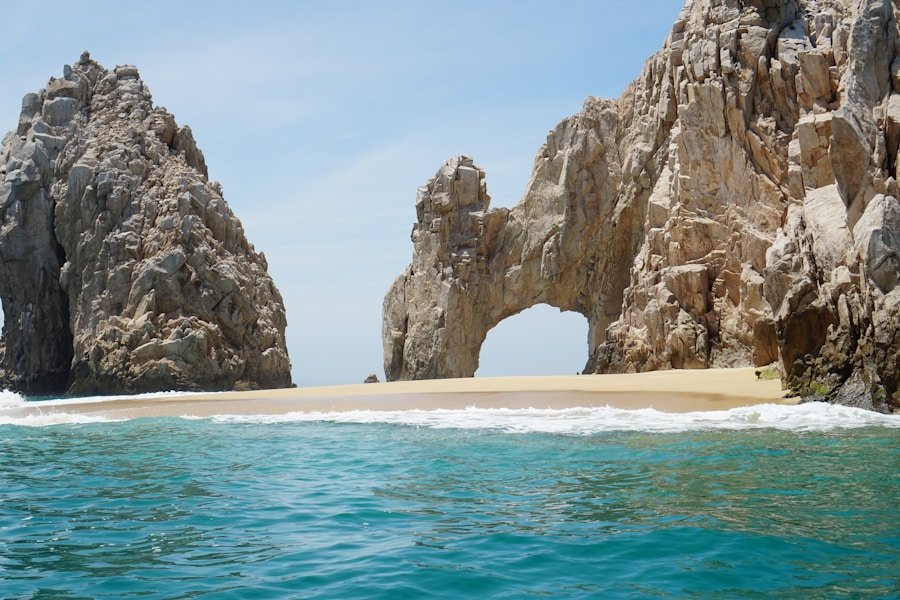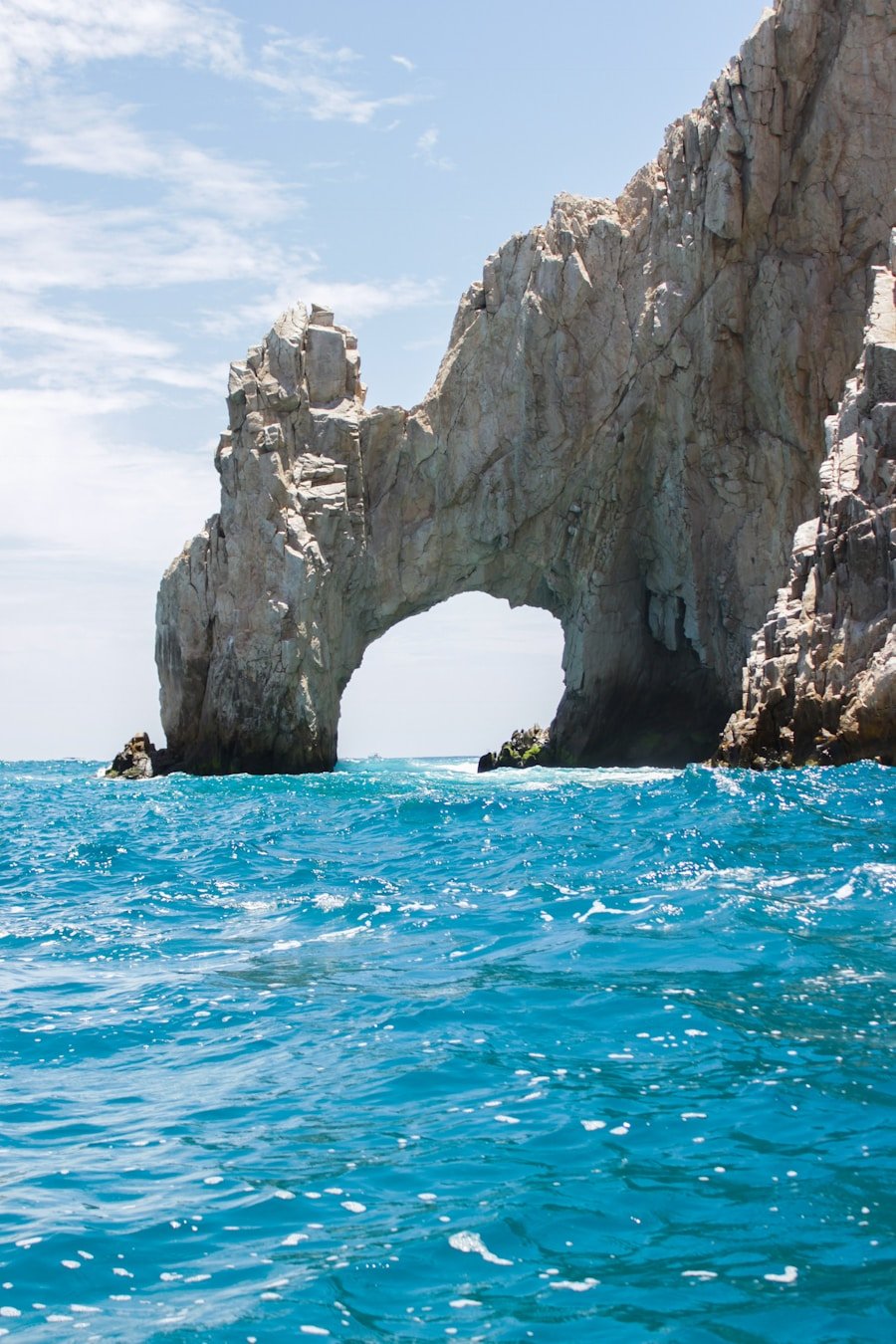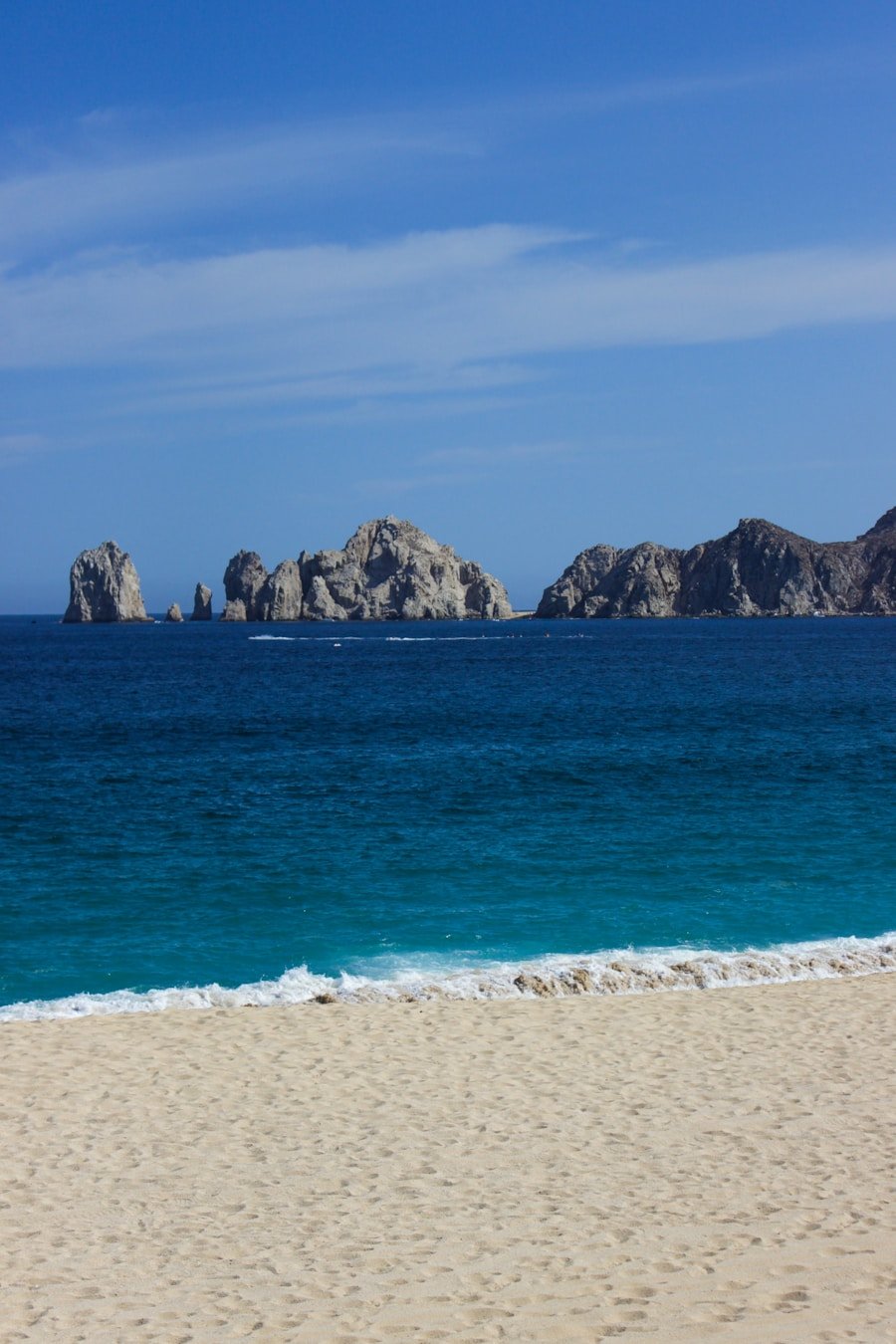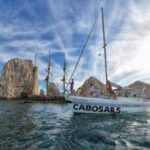Cabo San Lucas, a stunning resort city located at the southern tip of Mexico’s Baja California Peninsula, has long captivated visitors with its breathtaking landscapes and vibrant culture. Known for its picturesque beaches, dramatic rock formations, and lively nightlife, Cabo San Lucas serves as a gateway to the Sea of Cortez, often referred to as the “Aquarium of the World” due to its rich biodiversity. As we explore this enchanting destination, we find ourselves drawn not only to its natural beauty but also to the intricate relationship between its environment and the activities that sustain its economy and community.
As we delve deeper into the essence of Cabo San Lucas, we recognize that its allure extends beyond mere aesthetics. The region’s climate, characterized by warm temperatures and abundant sunshine, has made it a prime location for tourism and recreational activities. However, beneath the surface of this paradise lies a pressing concern: the changing ocean temperatures that are increasingly affecting marine ecosystems and the livelihoods of those who depend on them.
Understanding these dynamics is crucial for preserving the natural beauty and economic vitality of Cabo San Lucas for future generations.
Key Takeaways
- Cabo San Lucas is a popular tourist destination known for its beautiful beaches, vibrant marine life, and warm climate.
- Historical ocean temperature trends in Cabo San Lucas show a steady increase over the past few decades, with significant fluctuations.
- Factors contributing to the changing ocean temperature include climate change, El Niño and La Niña events, and human activities such as pollution and overfishing.
- The changing ocean temperature has had a significant impact on marine life, leading to shifts in species distribution, coral bleaching, and disruptions in the food chain.
- The effects of changing ocean temperature on tourism and recreation in Cabo San Lucas include altered diving and snorkeling experiences, and potential economic impacts on the local tourism industry.
Historical Ocean Temperature Trends in Cabo San Lucas
To comprehend the current state of ocean temperatures in Cabo San Lucas, we must first examine historical trends. Over the past few decades, we have witnessed a gradual increase in sea surface temperatures in this region. Data collected from various sources indicate that the average ocean temperature has risen significantly since the late 20th century.
This warming trend is not an isolated phenomenon; it reflects broader changes occurring in oceans worldwide due to climate change. As we analyze historical data, we notice that the fluctuations in ocean temperature are not uniform. Seasonal variations play a significant role, with warmer temperatures typically observed during the summer months.
However, the overall trajectory points toward a concerning increase in baseline temperatures. This shift has implications for marine ecosystems, as many species are sensitive to temperature changes. By understanding these historical trends, we can better appreciate the urgency of addressing the challenges posed by rising ocean temperatures in Cabo San Lucas.
Factors Contributing to the Changing Ocean Temperature

Several factors contribute to the changing ocean temperatures in Cabo San Lucas, and it is essential for us to consider both natural and anthropogenic influences. One of the primary drivers of rising sea temperatures is climate change, primarily caused by human activities such as burning fossil fuels and deforestation. These actions lead to increased greenhouse gas emissions, which trap heat in the atmosphere and subsequently warm the oceans.
In addition to climate change, we must also consider local factors that may exacerbate temperature fluctuations. For instance, urban development and tourism-related activities can lead to increased runoff and pollution in coastal waters. This runoff can alter local water temperatures and disrupt marine ecosystems. Furthermore, natural phenomena such as El Niño and La Niña can cause short-term variations in ocean temperatures, adding another layer of complexity to our understanding of this issue.
By examining these contributing factors, we can begin to grasp the multifaceted nature of changing ocean temperatures in Cabo San Lucas.
Impact of Changing Ocean Temperature on Marine Life
| Impact | Effect |
|---|---|
| Shift in Species Distribution | Some species may move to cooler waters, affecting ecosystems and fisheries. |
| Coral Bleaching | Rising temperatures can cause corals to expel the algae living in their tissues, leading to coral bleaching and potential die-off. |
| Disruption of Food Chains | Changes in ocean temperature can affect the availability of plankton, which forms the base of many marine food chains. |
| Increased Disease | Warmer waters can lead to the spread of diseases among marine organisms. |
The implications of changing ocean temperatures extend far beyond mere numbers; they profoundly affect marine life in Cabo San Lucas. As temperatures rise, many species face challenges related to their habitats and reproductive cycles. Coral reefs, which are vital ecosystems that support a diverse array of marine organisms, are particularly vulnerable to temperature changes.
Increased water temperatures can lead to coral bleaching, a phenomenon that occurs when corals expel the symbiotic algae living within them, resulting in a loss of color and essential nutrients. Moreover, shifting ocean temperatures can disrupt food chains and alter species distributions. As certain fish species migrate toward cooler waters, local fisheries may experience declines in catch rates, impacting both commercial and recreational fishing industries.
We find ourselves at a crossroads where the delicate balance of marine ecosystems is threatened by rising temperatures, necessitating urgent action to protect these vital resources.
Effects of Changing Ocean Temperature on Tourism and Recreation
Tourism is a cornerstone of Cabo San Lucas’s economy, and changing ocean temperatures pose significant challenges for this vital industry. As visitors flock to the region for its stunning beaches and water-based activities, they may unknowingly contribute to the very changes that threaten these attractions. Warmer waters can affect not only marine life but also the quality of recreational experiences available to tourists.
For instance, as coral reefs suffer from bleaching events, snorkeling and diving opportunities may diminish, leading to a decline in tourist interest. Additionally, changes in fish populations can impact sport fishing activities, which are popular among visitors seeking adventure on the water. As we consider these effects, it becomes clear that sustainable tourism practices must be prioritized to ensure that Cabo San Lucas remains an appealing destination while safeguarding its natural resources.
Efforts to Monitor and Mitigate the Changing Ocean Temperature

Data-Driven Conservation Efforts
Research institutions and government agencies are working together to collect data on ocean temperatures and marine ecosystems in Cabo San Lucas. This collaboration provides valuable insights into trends and potential impacts, enabling informed decisions on conservation efforts and resource management.
Community Engagement and Education
In addition to monitoring initiatives, there is a growing emphasis on community engagement and education. Local organizations are working to raise awareness about the importance of protecting marine environments and promoting sustainable practices among residents and visitors.
Collective Action for a Sustainable Future
By fostering a sense of stewardship within the community, we can collectively contribute to mitigating the effects of changing ocean temperatures and preserving Cabo San Lucas’s natural beauty for generations to come.
Future Projections for Ocean Temperature in Cabo San Lucas
Looking ahead, projections for ocean temperatures in Cabo San Lucas suggest that we may continue to experience rising temperatures if current trends persist. Climate models indicate that without significant reductions in greenhouse gas emissions, sea surface temperatures could increase by several degrees Celsius over the coming decades. This scenario raises concerns about the long-term viability of marine ecosystems and the economic activities that depend on them.
As we contemplate these future projections, it becomes evident that proactive measures are essential for safeguarding both marine life and tourism in Cabo San Lucas. By investing in renewable energy sources, promoting sustainable fishing practices, and enhancing coastal resilience through habitat restoration efforts, we can work toward a more sustainable future for this beloved destination.
Conclusion and Recommendations for Sustainable Ocean Management in Cabo San Lucas
In conclusion, our exploration of changing ocean temperatures in Cabo San Lucas reveals a complex interplay between environmental factors and human activities. As we witness rising sea surface temperatures impacting marine life and tourism, it is imperative that we take action to address these challenges. Sustainable ocean management practices must be prioritized to ensure that Cabo San Lucas remains a thriving destination while protecting its invaluable natural resources.
We recommend implementing comprehensive monitoring programs to track ocean temperature changes and their effects on marine ecosystems.
By promoting sustainable tourism practices and raising awareness about the importance of protecting marine environments, we can collectively work toward a brighter future for Cabo San Lucas—one where both nature and humanity can thrive harmoniously together.
If you are interested in learning more about ocean temperature in Cabo San Lucas, you may want to check out the article on net/’>cabo-adventures.
net. This website offers a wealth of information on various aspects of Cabo San Lucas, including the temperature of its surrounding waters. Additionally, you can also read their introductory post on cabo-adventures.net/hello-world to get a better understanding of what the website has to offer.
FAQs
What is the average ocean temperature in Cabo San Lucas?
The average ocean temperature in Cabo San Lucas ranges from 72°F (22°C) in the winter to 84°F (29°C) in the summer.
When is the best time to visit Cabo San Lucas for warm ocean temperatures?
The best time to visit Cabo San Lucas for warm ocean temperatures is during the summer months, from June to September, when the water temperature is at its highest.
What factors can affect ocean temperatures in Cabo San Lucas?
Ocean temperatures in Cabo San Lucas can be affected by seasonal changes, ocean currents, and weather patterns such as El Niño or La Niña.
How do ocean temperatures in Cabo San Lucas impact marine life?
The ocean temperatures in Cabo San Lucas play a crucial role in the distribution and behavior of marine life, influencing migration patterns, breeding seasons, and the availability of food sources.
Are there any activities in Cabo San Lucas that are influenced by ocean temperatures?
Yes, ocean temperatures in Cabo San Lucas can impact activities such as swimming, snorkeling, scuba diving, and fishing, as warmer waters are more inviting for these recreational activities.



